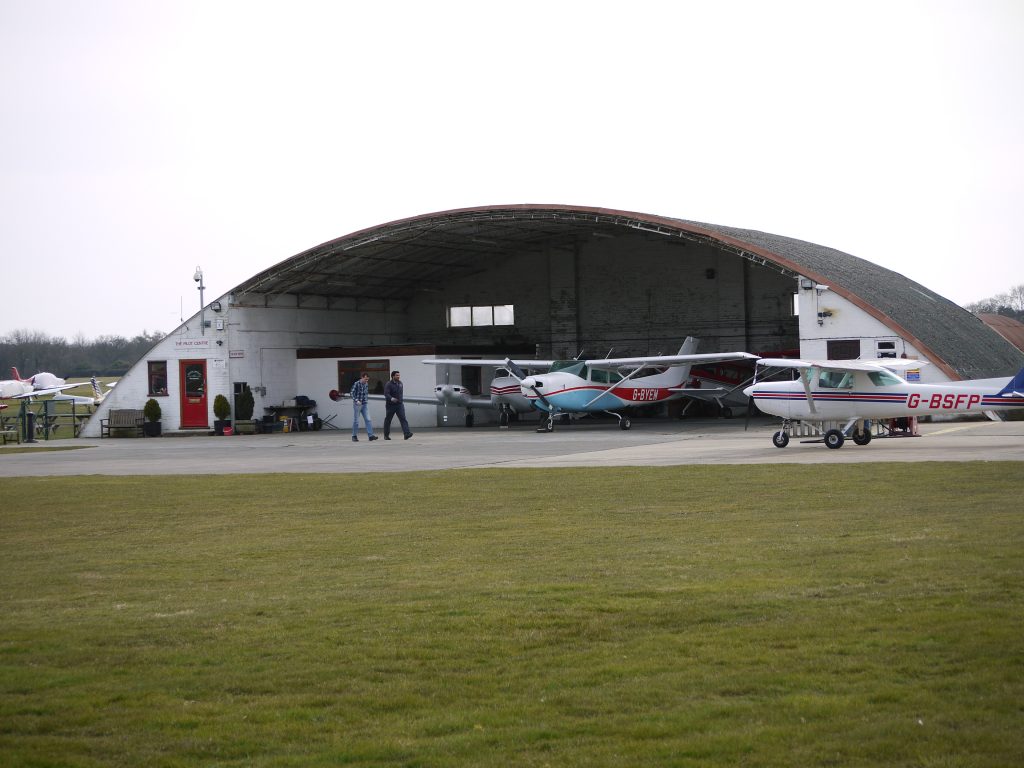The latest twist in a long-running court case between the owners of Denham airfield and a couple living close to the airfield boundary has opened up new legal options for airfields which find themselves under siege from noise complaints from near-by residents.
The battle between Norman and Lorna Peires and the owners of Denham airfield near Gerrards Cross, in Buckinghamshire, came to a head in 2016 when the couple went to the High Court to prevent helicopters carrying out training on a part of the airfield where the airfield boundary is just 58 metres from the couple’s property. In particular the helicopters were carrying out ‘sloping ground’ training as part of LAPL and PPL (Helicopter) training courses.

In April 2016 Justice Peter Smith found in favour of the Peires and against the airfield. After a visit to their property he said that the noise of helicopters was “particularly different to that of aeroplanes” and he found that the noise and activity involved in the helicopter exercises on the slope were very different to the noise of light aircraft and helicopters when they take-off and land. By contrast with the ‘normal’ take-offs and landings, the noise of the sloping ground operations was “continual and at the same volume“. The Judge also said that he found the noise “excruciating” in the garden and clearly noticeable to a significant degree within the rooms in the house. The judge went on to say that the airfield had had opportunities to minimise the noise but, for reasons which he could not understand, over 40 years of complaints the airfield had “steadfastly and without justification” refused to take any steps to improve the situation.
This was not the first action regarding noise at Denham. Previous owners of the same property, together with others living near to the airfield, made an application to the European Court of Human Rights (ECrtHR) in December 1997 claiming, among other things, that the noise caused by low flying aircraft and helicopters at the aerodrome, particularly training and maintenance, amounted to an interference with their right to private and family life under Article 8 of the European Convention on Human Rights. The ECrtHR rejected the claim on the grounds that it was unable to find that, in adopting its policy approach to the regulation of local aerodromes, the UK Government exceeded the margin of appreciation afforded to it or failed to take appropriate measures to strike a fair balance and to secure the rights of the local residents.
Section 76(1) of the Civil Aviation Act 1982 states in part:
“76 Liability of aircraft in respect of trespass, nuisance and surface damage
(1) No action shall lie in respect of trespass or in respect of nuisance, by reason only of the flight of an aircraft over any property at a height above the ground which, having regard to wind, weather and all circumstances of the case is reasonable, or the ordinary incidents of such flight, so long as the provisions of any Air Navigation Order and of any orders under section 62 above have been duly complied with…….”
Section 77 of the Civil Aviation Act 1982 states in part:
“Nuisance caused by aircraft on aerodromes.
(1) An Air Navigation Order may provide for regulating the conditions under which noise and vibration may be caused by aircraft on aerodromes and may provide that subsection (2) below shall apply to any aerodrome as respects which provision as to noise and vibration caused by aircraft is so made.
(2) No action shall lie in respect of nuisance by reason only of the noise and vibration caused by aircraft on an aerodrome to which this subsection applies by virtue of an Air Navigation Order, as long as the provisions of any such Order are duly complied with.”
Following the April 2016 judgement against them, the owners of Denham airfield (Bickerton’s Aerodromes Limited) appealed against the judgement and now a panel of three appeal court judges have overturned the original decision in the case. The appeal judges say that contrary to the original judgement, the statutory immunities in sections 76 and section 77 of the 1982 act do apply to the ‘sloping ground’ training and that during this training the helicopters are ‘in flight’ – a key legal definition in this case. The appeal court judges also found that that the manoeuvres carried out in helicopters on the slope are a mandatory part of the training skills to obtain a helicopter pilot’s licence. The CAA’s published exceptions from the SERA minimum height requirements include the situation where a helicopter is conducting manoeuvres, in accordance with normal aviation practice, within the boundaries of an aerodrome and the judges said that must include the manoeuvres which are a necessary part of helicopter pilot training. The Appeal Court also found that there was no proper basis for the original Judge’s observation that the helicopters involved in the exercises are not taking off or landing. The mandatory skill tests laid down by both EASA and the CAA specifically include landing and take offs on sloping ground. The Appeal Court judgement states, “That is precisely what the helicopter pilots are doing in the training exercises on the slope. As the CAA guidance makes clear, the hovering in the air in the case of the helicopters in the present case is merely to carry out the necessary ‘recce’ and to turn about the helicopter in order to effect the requisite landing.”







